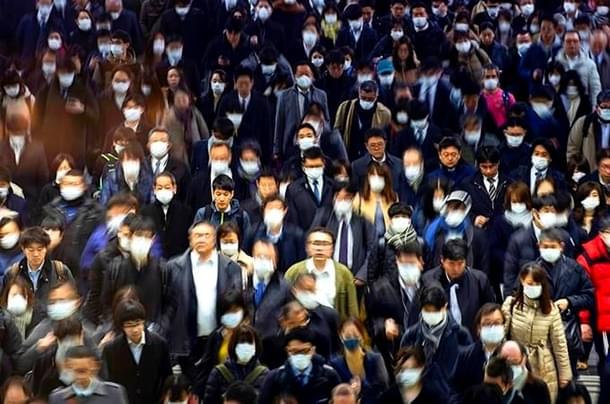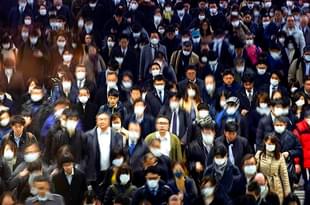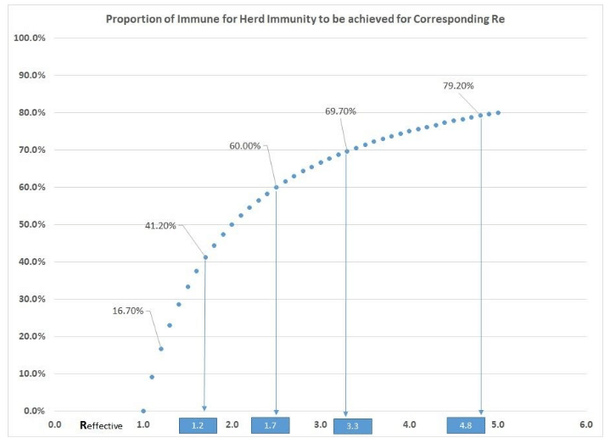Blogs
Why Herd Immunity Is A Maligned Term And Is A Definite Possibility For India
Anand Lakshman
Aug 04, 2020, 12:33 PM | Updated 12:33 PM IST
Save & read from anywhere!
Bookmark stories for easy access on any device or the Swarajya app.


All I need to do is type in 'herd' and Google suggests I am looking for herd immunity!
I am looking for the elusive in reality, yet easily googleable, 'herd immunity' and looking to see who else has heard of it?
TV channels have enough naysayers saying herd immunity cannot happen, except for when a vaccine is available, and that the magic number is 60-70 per cent of the population and nothing less.
It’s a difficult concept to explain to the layman, but let me try.
Herd Immunity is the minimum percentage ('proportion' for the more refined public health intellectual) of population, who, when immune (either because they caught the infection and their immune system responded and has a memory of that response stored away or because they were vaccinated and their immune system responded and that the memory of that response has been stored away, phew!), provide protection to the rest of the population, who are not immune (either due to not catching the infection or not getting the vaccine).
Well, this depends on the dynamics of transmission, the susceptibility of the population and characteristics of the infective agent (SARS COV-2, in case you are Rip Van Winkle and have just woken up) and all this boils down to a concept called R, which is the Reproduction number.
R, to put it simply, is how many people on average, can an infected person transmit the virus to.
If we assume that the population is virgin (fully susceptible, never exposed to the virus before) and also that no preventive measures are in place (masks, physical distancing, hand hygiene measures), then the number of people to whom one infected person transmits the virus to maybe high (up to 5.7 in the early days in Wuhan).
However, the number of people to whom the one infected person can transmit varies, based on the number who have developed immunity, non-pharmacological interventions being practised and the population dynamics (such as movement of people, population density, age structure of the population, innate immunity et cetera).
There is also an individual variation, which accounts for some being ‘super spreaders’ while others do not seem to transmit the infection (this is accounted for using a term called dispersion).
But for now, let us stick to one single number R effective or Re, which is kind of the moving average of the number of transmissions per infected individual across time.
The current estimates of Re for India vary between 1.11 to 1.8 and rightly so.
Each state, each city is in a different stage of the epidemic and aggregating them doesn’t help much.
But whatever it is, it seems like with the current dynamics of transmission and the much-maligned practice of wearing masks (chin up buddy!), maintaining social distancing, hand washing et cetera, the Re seems to be lower than 2.
Here is a graph that shows the percentage of the population that should be immune to provide herd immunity at various levels of Re.

As you can see from the graph, a Re level of 3-4 would mean that 60-70 per cent of the population would need to be immune, whether by natural infection or vaccine-induced immunity, to achieve herd immunity.
Clearly, India is not having that kind of transmission.
However, the importance of masks, hand hygiene and physical distancing measures cannot be understated.
They are the biggest weapons in our armamentarium in the fight against Covid-19.
If communities do not practice these measures, they run the risk of having higher transmission rates, which leads to higher morbidity and mortality as well as a higher Re and, therefore, more unattainable percentage of immune population for herd immunity.
Coming back to herd immunity in the current Indian context, if the Re is around 1.5-1.8, then the proportion of population that needs to be immune is around 33-44 per cent and not 60-70 per cent, as has been thrown around in the media.
And here come the importance or sero-prevalence studies.
The study in Delhi showed 23.5 per cent and in Mumbai, showed 57 per cent in slums and 16 per cent in non-slum areas of three municipal wards.
Ahmedabad showed about an 18 per cent prevalence.
The virus doesn’t seem to respect our efforts to contain it.
We have many more in the population infected, than those actually detected.
I agree that there are limitations to these studies and that we should read them carefully, but then, London and New York also showed similar prevalence rates (although the methodologies are different), when they peaked.
It is a fact that deaths are on the decline in Delhi and Mumbai and other cities are starting to peak.
Sero-prevalence studies in Chennai, Bangalore, Hyderabad and Kolkata would be very useful to understand the trend of SARS COV-2 in our overcrowded cities.
But to dismiss herd immunity, as not an option, is believing that we are controlling the narrative, with the virus playing a side role.
The virus is moving through the population, and if we follow the norms of masks, physical distancing and hand hygiene to a reasonable extent (remember it’s a new behaviour for most people and we know how tough behaviour change is), we have a chance that we will reach low levels of transmission, if not herd immunity when around 40 per cent of the population is infected.
Now, let us examine the other argument that the vaccine is the only saviour for us, else, we are doomed, because we need 60-70 per cent of the population to be immune.
If we assume that around 30 per cent of our population is infected (the sero-prevalence studies are a month old and IgG forms after 4 weeks, so the infection story is two months old), we still need another 30-40 per cent of our population who aren’t infected, to be vaccinated to get the benefits of herd immunity to remaining 30 per cent (non-immune and non vaccinated).
Thirty-40 per cent of 1,300 million translates to about 400-500 million people.
Most vaccine candidates need two doses, so we are talking of a billion doses to be administered, assuming we know who exactly is already immune, so that we don’t duplicate the efforts.
We have immunization programmes for children and pregnant women in our country. Ninety-five per cent of all vaccines are delivered by the public sector (5 per cent in private).
About 390 million doses are administered every year, through 9 million sessions across villages, hamlets, anganwadis, primary health centres, maternity homes, urban health centres and private clinics, to about 60 million recipients.
We have the advantage of knowing whom to vaccinate. Line lists of children below 5 years and pregnant women are available with ASHA/ Anganwadi workers.
In the private sector, parents know they have to go to a pediatrician for vaccines.
Now, imagine the target population for Covid-19 vaccine — Senior citizens with co-morbidities, working adults with chronic diseases et cetera — We do not have them enlisted for any national health programme at scale.
In the private sector, who would you take your 80-year-old father to for a shot — Internal Medicine/Diabetologist/General Practitioner? Where are the cold chain logistics to handle this scale?
So, in my assessment, if we were to depend on the vaccine for herd immunity, we will need 2-3 years of war-scale efforts to reach the non-immune 40 per cent of the population with two effective doses.
What do you think the virus would be doing in the interim?
What would happen to immunization programmes targeting measles, diphtheria or tetanus in that span?
So, am I saying the vaccine is no good? Not at all. Vaccine development is important and so far, the results are promising.
This virus is immunogenic and it is producing an immune response (some of which is measured by serologic surveys).
Vaccines will be needed for the vulnerable because herd immunity is a theoretical concept.
Population dynamics and asymmetries will ensure that there will be outbreaks and in endemic areas, lives of vulnerable people with co-morbidities will be at risk, but no mass hysteria of the sort as we are seeing now, will be needed.
We will need the vaccines to protect the most vulnerable, over time.
But to wish away herd immunity as not an option for India, is to play god with the virus.
Let us not fall in line with the herd mentality into believing the vaccine is the only solution.
Masks, physical distancing and hand hygiene will save more lives than vaccines.
Herd immunity is a distinct possibility at a lower threshold level, given current virus population dynamics.
I hope I have been heard? Hello…… Hello……
Dr Anand Lakshman is a public health entrepreneur and the founder-CEO of AddressHealth.





